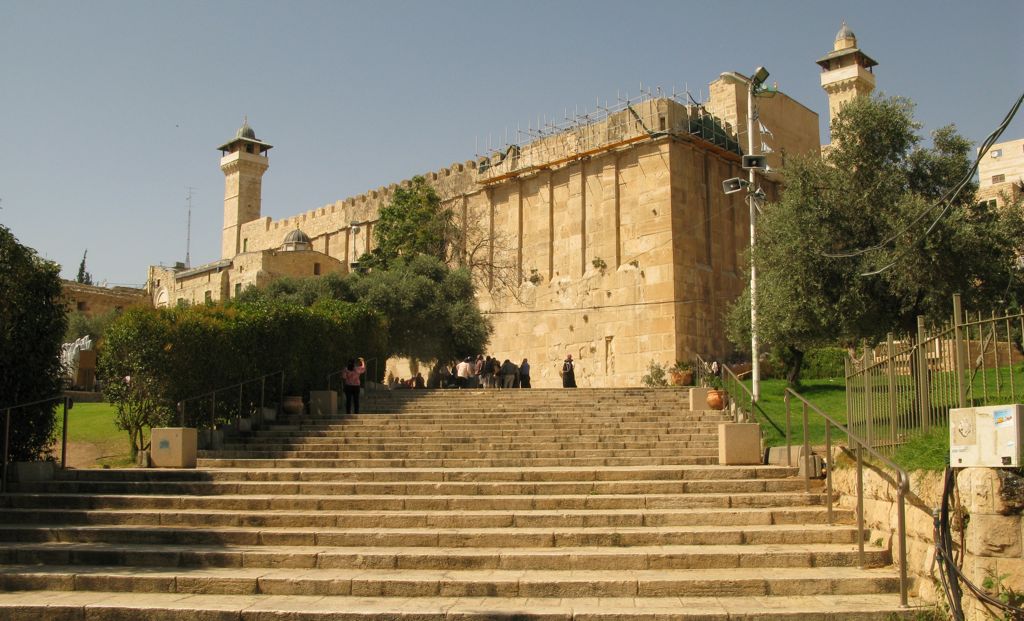Zionist Organization of America (ZOA) President Morton A. Klein released the following statement:
The ZOA joins U.S. Ambassador to the United Nations Nikki Haley and others in strongly condemning the shameful, offensive vote by the United Nations Educational, Scientific, Cultural Organization (UNESCO) World Heritage Council to place the ancient and present-day Jewish city of Hebron on the “World Heritage List” and “World Heritage in Danger List” as part of “Palestine.” (See, e.g., “Israel Blasts UNESCO for Designating Hebron an ‘Endangered’ Palestinian Heritage Site,” United with Israel, July 7, 2017; and “Haley Asks Un Not To Inscribe Hebron On World Heritage List,” by Tovah Lazaroff, Jerusalem Post, July 3, 2017.)
Hebron is the site of the world’s oldest Jewish community, and has a long rich Jewish history. Hebron is mentioned 87 times in the Jewish Bible – and is never mentioned in the Koran. The Torah relates that Abraham purchased the land and Cave of Machpelah in Hebron, where the Tomb of the Patriarchs is now located, to bury his wife Sarah. This was the first parcel of land owned by the Jewish people in Israel. Jewish patriarchs Abraham, Isaac and Jacob, and matriarchs Sarah, Rebecca, and Leah are all buried in the Tomb of the Patriarchs in Hebron.
King David was anointed King of Judah, and was later anointed King of Israel in Hebron. Hebron was part of the unified Kingdom of Israel, and later part of the southern Jewish Kingdom of Judah. Jews also remained living in Hebron after the Babylonians captured Hebron in 586 BCE. Hebron was later incorporated into the (Jewish) Hasmonean kingdom by John Hyrcanus. Jews also continued to live in Hebron through and after the Jewish revolt against the Romans, the Bar Kochba Revolt (132-135 CE), the Byzantine period, and Arab conquest (in 638). The remains of a Hebron synagogue from the Byzantine period have been excavated. Crusaders temporarily expelled the Jews in 1100 when they conquered the city. When the Mamelukes conquered Hebron in 1260, Hebron’s Jewish community was re-established and continued for hundreds more years. When the Ottoman Turks conquered Hebron in 1517, many Jews were murdered in a violent Ottoman pogram, and the survivors temporarily fled to Beirut. The Jewish community returned to Hebron 16 years later, in 1533. Despite pogroms, a plague, poverty and hardships, Hebron’s Jewish community grew throughout the 400-year Ottoman period (1517-1917). The Jewish community acquired land, expanded Hebron’s Jewish cemetery, and built a market, synagogue, yeshivas, guest house, homes, and the Beit Hadassah clinic (with help from the U.S. Hadassah organization) – which provided medical care to both Jews and Arabs. (See “Hebron: History and Overview,” Jewish Virtual Library.)
Starting on Friday evening August 23, 1929 (the Jewish Sabbath), thousands of Arabs perpetrated a vicious organized pogrom (the “Hebron Massacre”) – with the well-planned aim of eliminating Hebron’s millennia-old Jewish community. Arabs slaughtered 67 Jews (including women and children) with knives and axes, dismembered many of them, wounded another 60 Jews, razed synagogues, burned Torah scrolls, and looted Jewish homes. Hebron’s surviving Jews fled to Jerusalem.
In 1931, thirty-five Jewish families returned to Hebron and re-established the community. However, an imminent massacre by Arab rioters resulted in the evacuation of the community in April 1936.
Following Israel’s rebirth in 1948, the Jordanian Legion invaded and captured Hebron. During Jordan’s 19-year illegal occupation of the area (1948-1967), Jordan prohibited Jews from entering Hebron, in violation of the Jordanian-Israeli Armistice Agreement, which required Jordan to give Jews access to Jewish holy sites. Jordan razed the Jewish Quarter, desecrated Hebron’s Jewish cemetery and built an animal pen on the ruins of Hebron’s Avraham Avinu synagogue. This was the same treatment that Jordan meted out in the areas of Jerusalem that Jordan captured and illegally occupied from 1948 to 1967.
After Israel recaptured Hebron during the defensive Six Day War, Hebron’s millennia-long Jewish community was re-established.
Hebron’s long Jewish history is well-known. Even the PA’s 2012 submission to UNESCO admitted: “Hebron was always known as the burial place of the prophets Abraham/Ibrahim, Isaac, Jacob and their wives” – although the PA failed to mention the patriarchs’ and matriarchs’ Jewish identity. (“Old Town of Hebron al-Khalil & Its Environs,” submission by the Permanent Delegation of Palestine to UNESCO, 02/04/2012.)
UNESCO’s decision obscenely attempts to erase the thousands of years of Jewish presence in the city. (See UNESCO website announcement “07 July 2017: The World Heritage Committee meeting in Krakow has inscribed Hebron / Al Khalil Old town (Palestine) . . . on the World Heritage List during its morning session. The Committee simultaneously added the site of Hebron / Al Khalil to the List of World Heritage in Danger.” Likewise, UNESCO announced on twitter: “Just inscribed on @UNESCO #WorldHeritage List & World Heritage in Danger List: Hebron/Al-Khalil Old Town, #Palestine http://en.unesco.org/41whc. 7 July 2017,” together with a picture captioned “Hebron/Al-Khalil, Palestine.”)
UNESCO’s recent decision violates UNESCO’s own objective to “strengthen the Credibility of the World Heritage List.” (“Budapest Declaration On World Heritage,” UNESCO Decision: CONF 202 9, June 28, 2002)
As Israeli Ambassador Danny Danon stated: “This attempt to sever the ties between Israel and Hebron is shameful and offensive, and eliminates UNESCO’s last remaining shred of credibility.”
